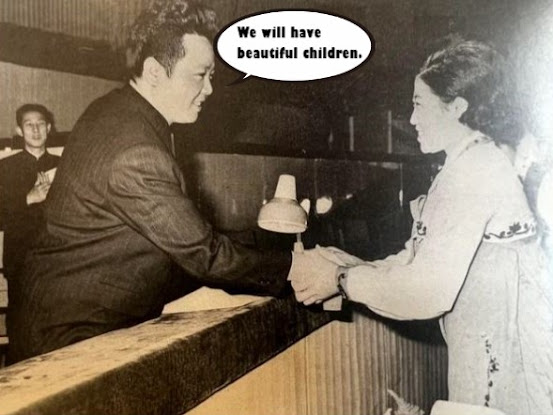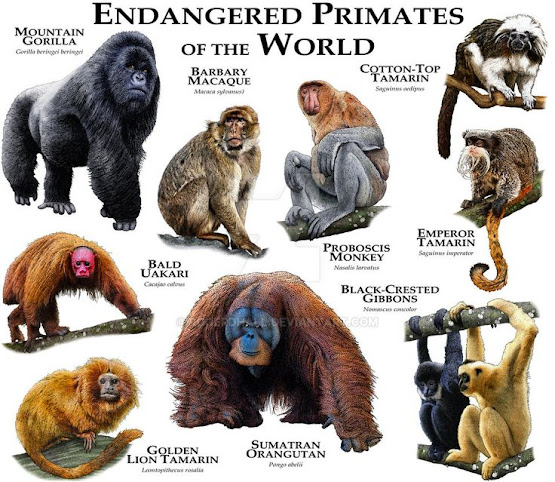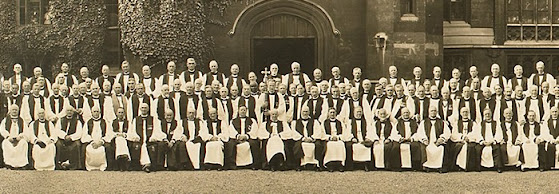Dynasty
(pronounced dahy-nuh-stee (US
English); din-uh-stee (UK English)
(1) A sequence of rulers from the same family, stock, or group.
(2) The rule of such a sequence.
(3) A series of members of a family who are distinguished for
their success in business, wealth creation etc.
(4) In sport, a team or organization which has an
extended period of success or dominant performance (technically unrelated to family links or even and great continuity in personnel).
(5) As used specifically in East Asian history, the polity or
historical era under the rule of a certain dynasty.
1425-1475: From the Middle English dynastia, from the Middle French dynastie, from the Late Latin dynastia,
from the Ancient Greek δυναστεία (dunasteía)
(power, dominion, lordship, sovereignty) from dynasthai (have power), of unknown origin. The adjective dynastic (from 1800) is used
when speaking or, relating to or pertaining to a dynasty; dynastical attested
since 1730. A dynast (hereditary ruler)
is from the 1630s, from the Late Latin dynastes,
from the Greek dynastes (ruler,
chief, lord, master). Synonyms include house
& lineage. Dynasty & dynast are nouns, dynastic & dynastical are adjectives and dynastically is an adverb; the noun plural is dynasties.
The
word is widely used of the ruling families of nations associated with royalty
(Hapsburg dynasty, Romanov dynasty, Hohenzollern dynasty) and remains the
standard term in the historiography of Imperial China (Ming dynasty, Qing
dynasty, Song dynasty, Tang dynasty, Yuan dynasty). In political science it’s a popular use (verging
on a slur) to describe the political arrangements concocted when a ruler
attempts (sometimes with success) to pass the office (and thus their country)
to a descendent (usually the eldest or most demonstrably ruthless son),
examples including the Congo, Syria and Cambodia. Sometimes, polities organized in this manner
can give rise to what is known as a subdynasty (which seems never to
hyphenated), an idea borrowed from European history when royal families routinely
would provide offspring to serve as kings of other states, thereby creating a
new dynasty; sometimes this worked well, sometimes not.
In
politics, families which some characterize as appearing dynastic can be very
sensitive to anything which seems even to hint at the suggestion and the Lee
family in Singapore is the standard case study.
Between the rule of Lee Kuan Yew (1923–2015; prime minister of Singapore
1959-1990) and that of his son Lee Hsien Loong (b 1952; Prime Minister of
Singapore since 2004) there was gap of over a dozen years (which must not be
called an interregnum) and of some interest is whether a similar mechanism will
be engineered to enable a third generation to assume office, the previous successor
designate having been removed from the plan because of “some unsuitability”. According to commentators, this means Mr Lee
has decided to delay his retirement so a “long runway” is provided on which the
next prime minister can emerge (Mr Lee presumably thinking of “runway” in the
modern sense of the “catwalk” on which models strut their stuff rather than
anything to do with aviation).
While
Li Hongyi (b 1987; first-born child of Lee Hsien Loong), has disavowed any
interest in a political career, there’s still plenty of time and if, in the
fullness of time, “drafted” by the ruling PAP (the People’s Action Party which
has been in power since independence in 1959), he may feel it his duty to be “be
persuaded”. Li Hongyi however may simply
believe his lineage is too great a disadvantage to overcome. Earlier, Lee Hsien Loong dismissed
suggestions his stellar career (becoming at becoming at 32 the youngest
brigadier-general in the history of the Singapore military and prime minister
at 53) owed anything to family connections, claiming being the prime minister’s
son actually hindered him because people were so anxious to avoid accusations of favoritism. Interestingly, entertainment
personality Kylie Jenner (b 1997) made much the point, claiming it was belonging
to a famous family which saw her denied some modelling work. The Lee family though do seem unusually
sensitive to suggestions the scions might unduly benefit from the connection,
the Financial Times in 2007 even having to apologize for having published not
anything libellous (actually easily done in Singapore) but simply a list of Lee
family members in high positions in the island nation. The current derogatory slang is “nepo baby”,
a clipping of nepotism baby, a term one is unlikely to read in the Singaporean
press.
Kim I, II & III: The Kim Dynasty, Democratic People’s Republic of Korea (DPRK, aka
North Korea)

Kim I: Kim Il-sung (1912-1994; The
Great Leader of DPRK (North Korea) 1948-1994 (left). Like his descendants, The Dear Leader and The Supreme
Leader, The Great Leader enjoyed
food. He’s pictured here at lunch with another foodie, comrade Stalin (1878-1953; Soviet leader 1924-1953) (right).
Kim Il-sung held an array of titles during his decades as the DPRK’s
dictator, the proliferation not unusual in communist nations where the ruling
party’s structures are maintained alongside the formal titles of state with
which a nation maintains relations with the rest of the world. In office for a notable forty five years he was designated premier
(head of government) between 1948-1972 and president 1972-1994. He was head of the Workers' Party of Korea
(WPK) between 1949- 1994, and in that role was styled as chairman 1949-1966 and
general secretary after 1966. During his
forty-five year rule, there were ten US presidents, six South Korean
presidents, nine British prime ministers and ten Australian prime ministers. He tenure in office also spanned the time of the
USSR from its apotheosis under Comrade Stalin to its collapse in 1991.
Being dead however proved no obstacle to The Great Leader extending his presidency, the collective office “Eternal
leaders of Juche Korea” (Chuch'ejosŏnŭi
yŏngwŏnhan suryŏng) created in 2016 by the insertion of an enabling line in
the preamble to the constitution. What
this amendment did was formalise the position of The Great Leader and his late son Comrade Kim Jong Il (The Dear Leader) as the “eternal leaders”
of the DPRK. Juche is the term used to describe the DPRK’s national philosophy, a
synthesis of The Great Leader’s
interpretation of (1) Korean tradition and (2) Marxist-Leninist theory.
Funeral of The Great Leader, 1994.It was an interesting move.
Technically, the office of president was constitutionally established only
in 1972. Prior to that, the role of head
of state had been purely ceremonial and held by respected party functionaries,
all power exercised by The Great Leader
in his capacity as premier and general secretary of the WPK. So tied to the legend of The Great Leader was the office of president that upon his death in
1994, the position was left vacant, The
Dear Leader not granted the title.
That nuance of succession for a while absorbed the interest of the DPRK
watchers but attempts to invest the move with any significance abated as DPRK
business, though in the more straitened circumstances of the post Soviet world,
continued as usual.
The constitution was again revised in 1998. Being a godless communist state, no fine theological
points stood in the way of declaring The
Great Leader the DPRK’s "Eternal President", the latest addition
to the preamble declaring:
Under the leadership of
the Workers' Party of Korea, the Democratic People's Republic of Korea and the
Korean people will hold the great leader Comrade Kim Il-sung in high esteem as
the eternal President of the Republic.
The constitution in its 2012, promulgated after the death of The Dear Leader, again referred to The Great Leader as "eternal
President of the Democratic People's Republic of Korea" but, in 2016, The Dear Leader, having apparently been
dead for a decent duration, another amendment to the preamble changed the
administrative nomenclature of executive eternity to "eternal leaders of
Juche Korea", the honor now jointly held by the leaders great & dear. It was another first for the Kims.
Kim II: Kim Jong-il (1941–2011; The
Dear Leader of DPRK (North Korea), 1994-2011). Pictured here admiring a vegetable, The Dear Leader is accompanied by a general. DPRK generals wear big hats and always carry a notebook in case the closest Kim says something. They write it down.
As a construct, the DPRK is best thought of a hereditary theocracy.
Although opaque, its dynamics are now
better understood but when The Great Leader
died in 1994, neither within the country nor beyond was it widely understood how
much of the power structure he controlled had passed to The Dear Leader. Although
the economic circumstances of 1994 were hardly propitious, there seems to have
been little doubt about the formal succession, The Dear Leader having been anointed for more than a decade. The DPRK’s media operation, while not in the conventional sense having a
middle class to be made “quite prepared”, had the rest of the country to work
on and The Dear Leader was gradually
eased into photo opportunities with The
Great Leader, eventually making even solo appearances, sometimes in the
role of Supreme Commander of the Korean People's Army to which he’s been
appointed in 1991, despite having no military experience, although, given the
minimal battlefield exposure of most of the generals, this might have been less
of a problem than it appears.
Perhaps now aware of his own mortality, The Great Leader spent some of the time in the years before his death
clearing the decks for the succession, purging the military and civilian ranks
of any difficult types who might prove obstacles to The Dear Leader’s ascent. Some
apparently died but it may have been a coincidence; constitutionally the DPRK
may be a theocracy but its military and political elite are gerontocracies. The path was smoothed and, the military
command settled, in 1992, The Great
Leader announced The Dear Leader was
in charge of all the DPRK’s internal affairs.
Curiously, shortly after that, the media began using the honorific “Dear
Father” instead of “Dear Leader” but for whatever reason, all official
communications soon reverted to the original title and there’s never been any
explanation.
Despite all the dynastic help, the indications are it took The Dear Leader sometime fully to assert
his authority. Seriously weird it may
appear but, the WPK is just another political party and they all have factions
and, in the difficult post-Soviet environment of the 1994 succession, it seems
there were genuine discussions within the party about how to deal with the
economic problems the DPRK faced. It
frankly didn’t go well but while The Dear
Leader may not have learned much economic theory, he proved adept at
consolidating his power, adopting the Songun (military first) policy of North
Korea, granting the military priority in resource allocation and political
influence, not out of any concern about foreign invasion but to ensure the
loyalty of what was, in effect, a giant police force to protect the Kim dynasty
from a revolt of the people. Secure in office,
The Dear Leader did spasmodically attempt
economic reforms but the results were not impressive.

Planning the dynasty: The Dear Leader shaking hands with Japanese-born
singer Ko Yong-hui (1952-2004; aka Takada Hime) circa 1972. She became his consort and would later give
birth to Kim III (later The Supreme
Leader). Within the DPRK, her name
must never be spoken and she's referred to only by honorific forms, the most
commonly use of which is: “The Respected Mother who is the Most Faithful and
Loyal 'Subject' to the Dear Leader Comrade Supreme Commander”.
By 1997, he was sufficiently entrenched to engineer his
appointment to The Great Leader’s old
post as General Secretary of the WPK and a year later, a constitutional
amendment declared his role as chairman of the National Defence Commission was "the
highest post of the state", presumably among those still alive because the
same constitutional reform abolished the office of president and proclaimed The Great Leader to be the DPRK’s "Eternal
President". The year after The Dear Leader’s death in 2011, the
constitution was amended to declare him Eternal General Secretary of the WPK
and Eternal Chairman of the National Defence Commission. In 2016, after a decent period of mourning,
the new title "Eternal Leaders of Juche Korea" was created and
granted to both the Great Leader & Dear Leader.

US actor Elizabeth Gillies (b 1993) appeared as Fallon Carrington on in the television drama Dynasty (2017–2022), a revival of the 1980s soap opera; it was shown in the US on the CW Television Network (episodes streamed internationally on Netflix the next day). She appeared (far left) in Ariana Grande's (b 1993) music video Thank U, Next (2019), taking the part of Lindsay Lohan in the segment which was a homage to Mean Girls (2004). While not
technically a doppelganger, the degree of resemblance was sufficient for the concept to
work.
The reputation of the DPRK as a hermit
state cloaked in secrecy is undeserved because there is an official biography
of The Dear Leader and from his
birth, he was amazing. He was born
inside a log cabin beneath Korea’s most sacred mountain and in the moment of
delivery, a shooting star brought forth a spontaneous change from winter to
summer and there appeared in the sky, a double rainbow. The
Dear Leader was not subject to bowel movements, never needing to defecate
or urinate although it’s not known if this is a genetic characteristic of the
dynasty and therefore enjoyed also by The
Supreme Leader. He had a most discriminating
palette so The Dear Leader employed staff
to inspect every grain of rice by hand to ensure each piece was of uniform
length, plumpness, and color, The Dear Leader
eating only perfectly-sized rice. Although
he only ever played one round of golf and that on the country’s notoriously
difficult 7,700 yard (7040 m) course at Pyongyang, he took only 34 strokes to
complete the 18 holes, a round which included five holes-in-ones. Experienced golfers have cast doubt on the round of 34 (not commenting on the holes-in-one) but the diet of individually inspected & polished grains of rice was thought "at least plausible".

The car is a 1975 or 1976 Lincoln Continental, built by Moloney Standard Coach Builders on an extended wheelbase. Lincoln experts say it's a different car to the similar model used in The Great Leader's funeral, the dynasty said to own several and it's believed they were obtained "through sources in Japan". Uniquely, the Kin dynasty is the only only family said also to own a brace of Mercedes-Benz 600s (M100; 1963-1981) long-roof Landaulets, only twelve of which were built. Fittingly, the long-roof variants are known casually as the "presidentials" but the factory never officially used the designation.
The Kims certainly build personality cults but it’s not only
the North Koreans who create retrospective honours to acknowledge the
uniqueness of a special individual. George
Washington (1732-1799) will forever be the first President of the United States (POTUS) so that’s fine but he retired from the army as a lieutenant general and later
appointments of some to more senior ranks bothered some in the military, concerned his primacy in the hierarchy wasn’t adequately honoured. The
later appointments had been (1) Ulysses S Grant (1822–1885) created General of
the Army in 1866, (2) John Pershing (1860–1948) appointed General of the Armies
in 1919 and (3) nine of the World War II (1939-1945) generals and admirals who were appointed to
the newly formalised five star rank as Generals of the Army and Fleet Admirals
respectively. Where Washington stood in
this potpourri of stars and titles wasn’t clear until 1978 when, after years of discussions of the difficulties inherent in solving the problem, in a
surprisingly simple act of internal Army administration, Washington posthumously
was promoted to General of the Armies of the United States, making him eternally the US military’s most senior officer.

Kim III: Kim Jong-un (b circa 1982; The Supreme Leader (originally The
Great Successor) of DPRK (North Korea)
since 2011). The Supreme Leader is pictured here with
South Korean foreign minister, Chung Eui-yong (b 1946).
Inheriting the family business at a much younger age than The Dear Leader, The Supreme Leader, didn’t benefit (or
suffer) from the long public gestation period his father was provided by The Great Leader. It was in 2009, about two years before The Dear Leader’s death that the media
began reporting the youngest son, was to be the DPRK’s next leader
although at that stage, he was referred to as The Brilliant Comrade, the honorific The Great Successor not adopted until after The Dear Leader’s death and it was soon replaced by The Supreme Leader. For whatever reason, and the speculation and
conspiracy theories are many, Kim III more quickly assumed his panoply
of offices and titles than his immediate ancestor.
Announced on state television as The Great Successor, The Supreme Leader was appointed General Secretary of the
WPK, Chairman of the Central Military Commission, and President of the State
Affairs Commission, followed soon afterwards by a promotion to the army’s highest
military rank, Marshal of the Korean People's Army, adding to his position as
Supreme Commander of the Armed Forces (exactly the same constitutional arrangement adopted by Hitler as commander-in-chief of both OKH (Oberkommando des Heeres (High Command of the Army)) and OKW (Oberkommando der Wehrmacht (High Command of the Armed Forces)). Great minds do think alike. Confusingly, having already morphed from The Brilliant Comrade to The Great
Successor to The Supreme Leader,
references also appeared calling him The Dear
Respected Leader but thankfully the proliferation seems now to have stopped. In office, he has pursued 병진 (byungjin (literally "parallel development")), a refinement
of The Great Leader’s policy simultaneously
to develop both the economy and the military, his particular emphasis in the latter a focus on
nuclear weapons and inter-continental delivery systems. It may be an attempt to avoid the problems inherent in the “Waffen
und Butter” (guns and butter) programme pursued by the Nazi regime (despite the international perception) as late as the first three years of World War II (1939-1945).
Although Kim III is no longer referred to as The Great Successor, there have been great successes. Despite Western propaganda, there are elections
in the DPRK and when The Supreme Leader
sought a seat in the Supreme People's Assembly, there was a record turnout of
voters and he received 100% of the votes cast.
Although it’s hard to determine the veracity of many of the reports, it’s
suggested he’s an innovator in matters of military discipline, new methods used
by firing squads said to include flame throwers, and anti-aircraft cannons, both said to make quite a mess although it's difficult to know how high is the body count, some reported executed later turning up alive and well. Worth a
mention though is the assassination in 2017 of his exiled half-brother Kim
Jong-nam (1971-2017), killed with the nerve agent VX while walking through Kuala Lumpur
International Airport, a novel twist on the extra-judicial execution being the
use of two aspiring starlets to deliver the VX; they believed they were being
filmed as part of a reality TV show. Most celebrated has been the nuclear programme
and the increasingly bigger and longer-range missiles paraded from time to time. Underground nuclear tests being hard to
monitor, it remains unclear whether the devices tested are the long de rigueur plutonium
weapons or, for the first time since the one-off A-Bomb used in Hiroshima in 1945, made using uranium. Most recently, state media has announced the
complete success in avoiding COVID-19 with no cases reported in the republic so, on any basis of calculation, The Supreme Leader has supervised the most successful COVID-19 strategy on Earth.

The Supreme Leader has also drawn the interest of the
pro ana community because of his remarkable weight loss. Whether his motivation was (1) concerns about
his health, being a bit chubby, (2) a wish to look more sexy and attractive to
younger women or (3) display some solidarity with his subjects, many of whom
were suffering food shortages, his weight-loss regime has been a success,
experts estimating, on the basis of photographic evidence, that he has probably
shed up to 25-30 kg (65-80 lb). This is good but has created a problem for the small number of people in the entertainment business who work as as Kim Jong-il impersonators, some of who have sought guidance from the pro ana community. For security reasons, The Supreme Leader is known also to employ body doubles and it's not known if they're currently being starved or have already been shot and replaced with thinner models.
After the weight loss he seems in such rude good health that,
still not forty, there’s no reason he may not rule perhaps even longer than his
grandfather’s forty-five years. Ever since the demise of the USSR in 1991, analysts
have been predicting the imminent demise of the communist regimes in both Pyongyang
and Havana but they seem to muddle through, the DPRK of late enjoying new sources of foreign exchange, branching out from
industrial-scale drug production and the smuggling of oil and minerals to the
new field of cybercrime; even in the niche market of fake news they're said to run a small operation.















